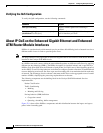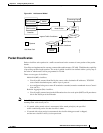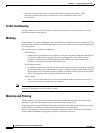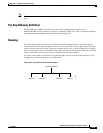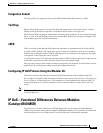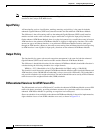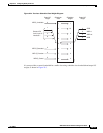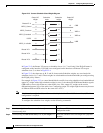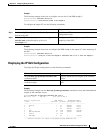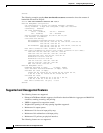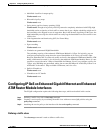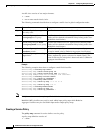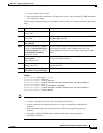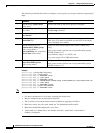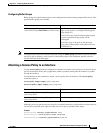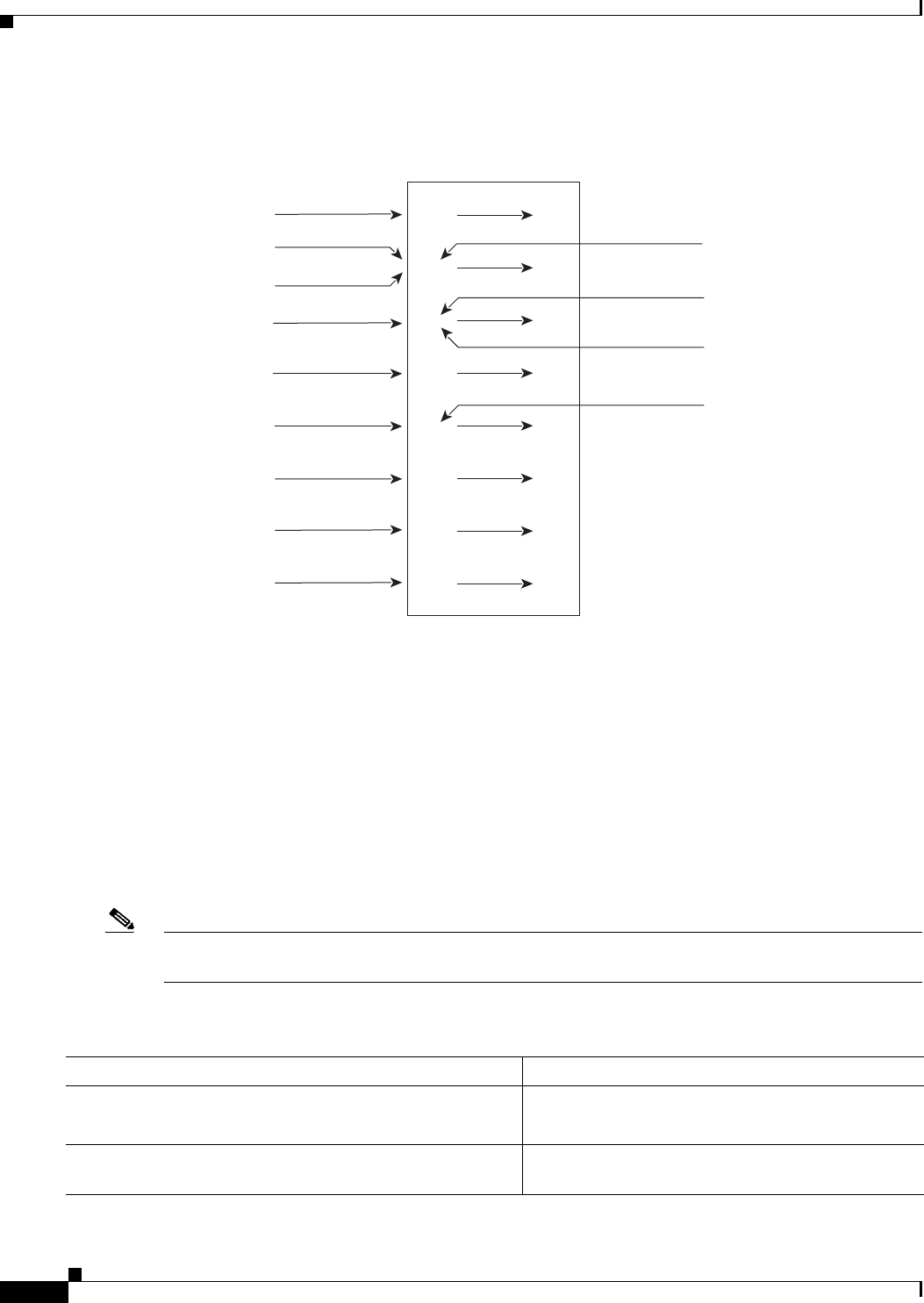
22-14
ATM Switch Router Software Configuration Guide
OL-7396-01
Chapter 22 Configuring Quality of Service
IP QoS—Functional Differences Between Modules (Catalyst 8540 MSR)
Figure 22-5 Current Scheduler Class Weight Diagram
In Figure 22-5, the Broute-VCs move to scheduler classes 1, 6, 7 and 8 only if the IP QoS feature is
configured on the interface. If IP QoS is not configured on the interfaces all Broute-VCs map to
scheduler class 5, as show in Figure 22-4.
In Figure 22-5, the characters A, B, C and D, shown under Scheduler weights, are associated with
scheduler classes 1, 6, 7 and 8. These weights are calculated based on the bandwidth you configure using
the IP QoS policy feature.'
For example, in Figure 22-5, to control bandwidth for a traffic class using scheduler class bandwidth and
output VC weight with a high scheduler weight for class 2, the enhanced ATM Router Module regards
CBR traffic as more critical than any other traffic class. Plus, output VC weight can be used to
differentiate between VCs of the same class. Configuring output VC weight might be necessary because
of different PCR and SCR values for the same class of VCs.
Note Scheduler class weight for 2, 3, and 5 are enabled by default in Cisco IOS Release 12.1(14)EB. No
configuration is required.
To configure the scheduler class weight, use the following commands:
Broute-VC 0
Broute-VC 1
8
8
8
8
Output VC
weight
Scheduler
class
Scheduler
weight
1
2
3
4
5
6
7
8
A
15
8
16
4
B
C
D
Output VC
weight
CBR
VBR-rt
VBR-nrt
UBR
MPLS_A vailable
2
LSIPC
15
MPLS_S tandard
2
15
8
4
2
MPLS_Control
MPLS_Premium
Broute-VC 2
Broute-VC 3
4
2
91092
Command Purpose
Step 1
Switch(config)# interface atm card/subcard/port
Switch(config-if)#
Specifies an ATM interface and enters interface
configuration mode.
Step 2
Switch(config-if)# atm service-class {2 | 3 | 5} wrr-weight 1-15 Enters the scheduler class and weight for a physical
interface.



